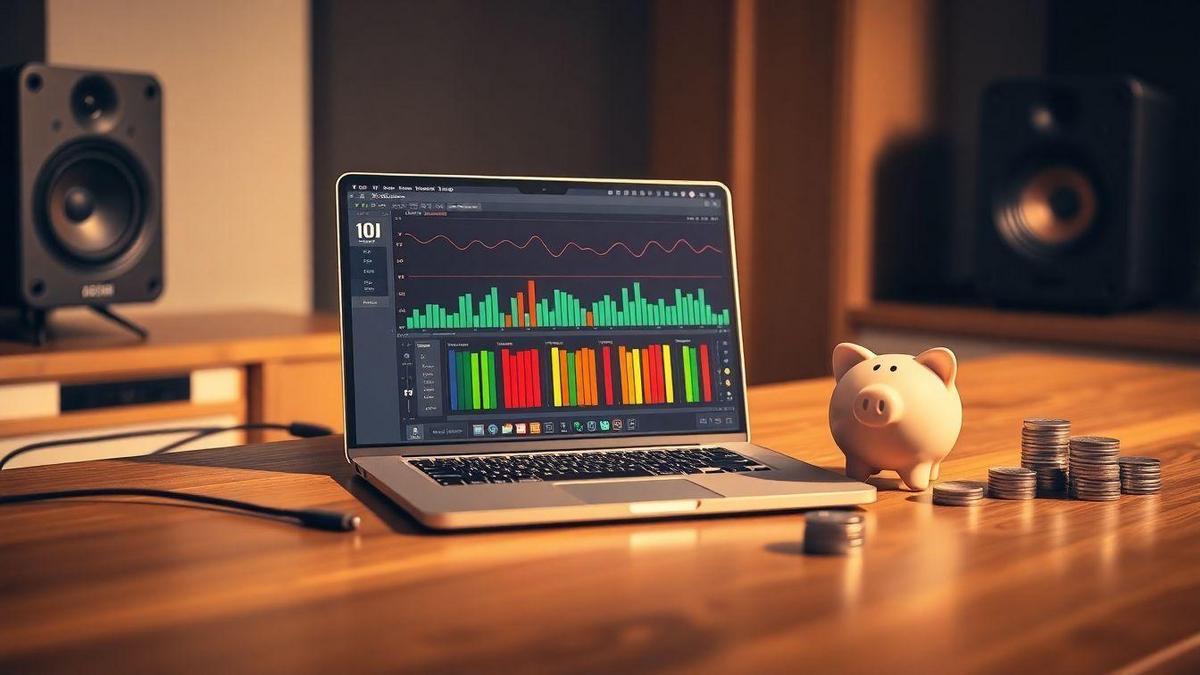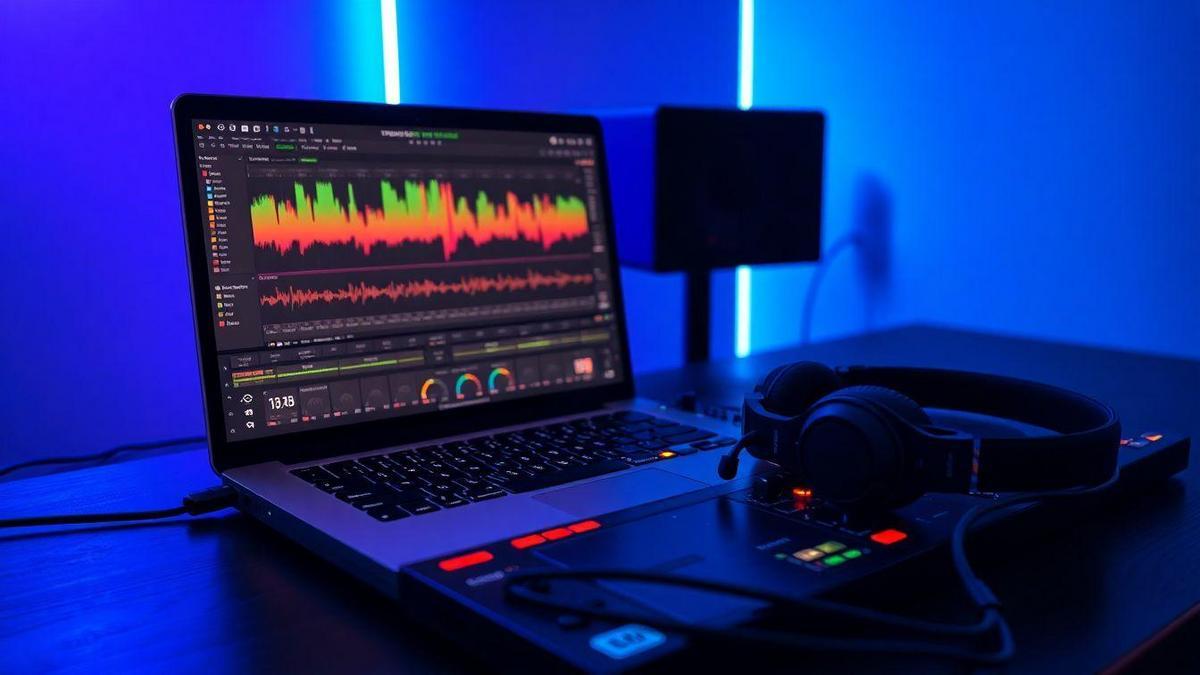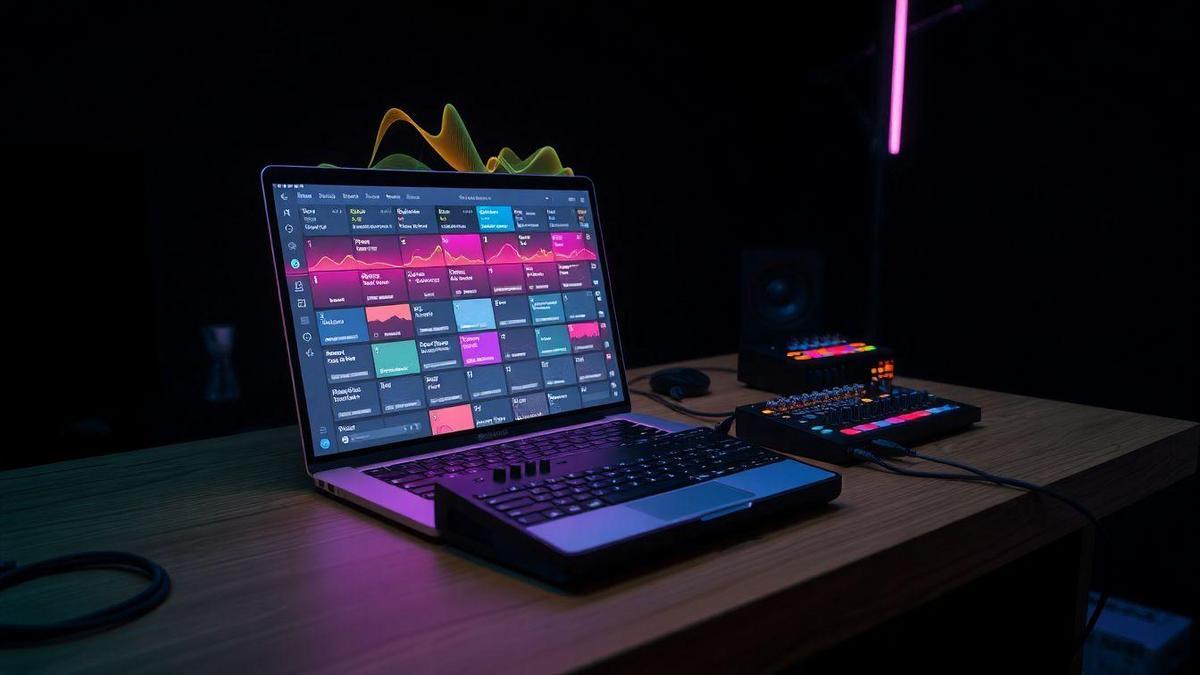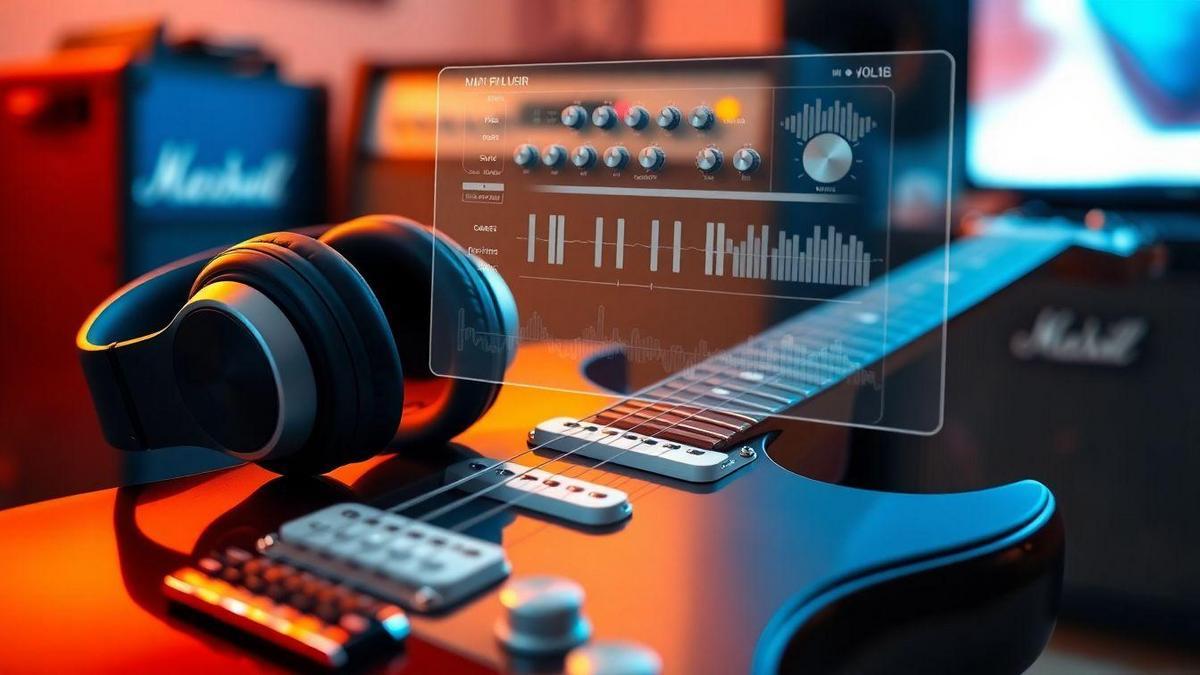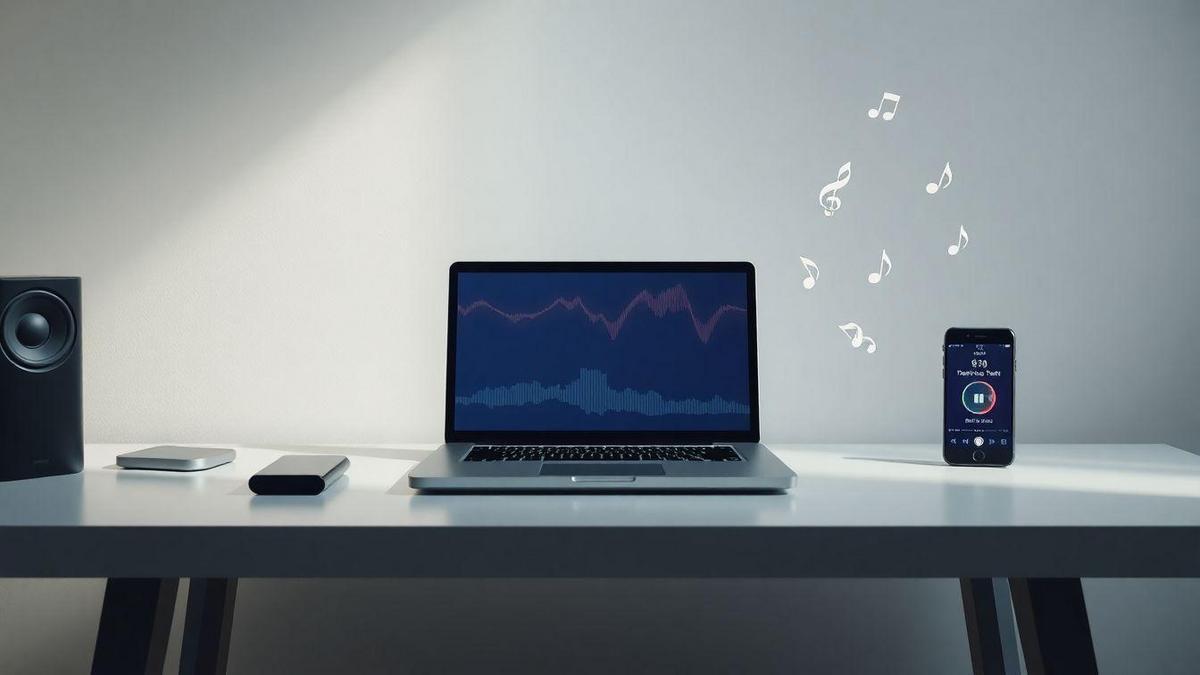affordable mastering plugins for electronic music producers with loudness matching give you a fast, clear path to streaming-ready masters you can trust. Sambizanga Musik walks you through LUFS basics, why loudness matters, quick checks in your DAW, a simple loudness-matching workflow for FL Studio, Ableton, and Logic, budget plugin picks, and easy listening tests so you can finish tracks that sound pro at home.
Key Takeaway (English)
- Match loudness so you compare plugins fairly
- You can get pro sound with affordable plugins when you use them right
- Sambizanga Musik shows simple tests to pick the best plugin
- Keep your master chain simple in your home studio for clearer results
- Check your mixes on different speakers so loudness feels right everywhere
LUFS and loudness basics for your electronic tracks
LUFS is the unit you’ll meet when you start thinking about loudness like a listener — not just peak numbers. It measures perceived loudness over time, so a pulsing techno loop and a long ambient pad can read differently even at the same peak level. If you want your tracks to sit right on streaming services and in DJ sets, LUFS is the practical tool that tells you how loud people will actually hear your mix.
Treat LUFS as part of your mix checklist, not a secret master-only trick. Use LUFS metering while you balance drums, bass, and synths so you don’t chase loudness later and kill dynamics. When you mix with a target LUFS range in mind, you’ll preserve punch and clarity and spend less time wrestling with limiters at the end.
Sambizanga Musik puts this front and center: start measuring early, make small gain moves, and test your track on different systems so your music translates — from phones and club rigs to streaming platforms.
What LUFS measures and why it matters for your mix
LUFS (Loudness Units relative to Full Scale) measures perceived loudness over time. Integrated LUFS gives a single value for the whole track, while momentary and short-term LUFS show quick changes. Those readings help you spot whether your kick or a big synth section is driving the perceived level too hard.
Why that matters: if a low-frequency-heavy section reads much louder, listeners will feel the mix as uneven. Use LUFS to keep dynamics honest — so your low end thumps without masking mids and highs. When shopping plugins, look for options that offer loudness matching so you can A/B fairly.
Sambizanga Musik recommends starting with simple tools and learning loudness matching early. Try affordable mastering plugins for electronic music producers with loudness matching to compare versions at the same perceived level before you commit to a final limiter.
How streaming loudness rules affect your final master
Streaming platforms normalize tracks to target loudness levels. That means a hyper-compressed master might get turned down, and the quieter, dynamic mix could end up sounding better after normalization. If you blast a track to squeeze every decibel, you risk losing punch and clarity once the platform adjusts gain automatically.
Aim for a realistic LUFS target for the platform you’re releasing on, and leave headroom for a limiter to tame peaks without squashing life out of the track. A balanced master that sits near platform targets will sound more consistent across listeners’ devices and keep your track closer to what you intended.
.bar { fill: #4CAF50; }
.label { font: 12px sans-serif; fill: #222; }
.value { font: 12px sans-serif; fill: #fff; text-anchor: middle; }
.title { font: 16px sans-serif; fill: #111; }
Common Platform LUFS Targets (Integrated)
Spotify —14 LUFS
-14
YouTube —14 LUFS
-14
Apple Music (Sound Check) —16 LUFS
-16
Broadcast (EBU R128) —23 LUFS
-23
Quick LUFS check you can do in your DAW
- Run a LUFS meter on your master bus, play the whole track, and note the integrated value.
- Compare integrated LUFS to your target platform.
- Lower or raise master gain and re-check rather than relying on limiting alone.
- If you need a louder read, add gentle limiting and re-measure until the integrated LUFS sits near the target.
How to choose affordable mastering plugins for electronic music producers with loudness matching (Sambizanga Musik guide)
Picking the right plugin feels like shopping in a busy market. You want loudness that holds up on streaming services, but you also don’t want to spend a fortune. Sambizanga Musik helps you focus: decide if you need LUFS matching, true peak control, and a clear workflow. Those three features cover most problems you’ll face when mastering electronic tracks that need to compete loud but clean.
Next, test plugins with the same loudness so you compare apples to apples. A plugin that boosts perceived loudness without LUFS matching can fool you in one listen and fail in release. Use a loudness meter and set the target LUFS for the platform you’re aiming at — then check true peak to avoid clipping on streaming codecs.
Finally, think about workflow and support. Cheap tools that are well-documented and updated serve you longer than an expensive one-off. Sambizanga Musik prefers tools that let you dial in targets fast and give clear readouts. If a plugin makes you guess, it slows you down; pick something that helps you finish.
Features you need: mastering plugins with LUFS matching, true peak, and loudness control
- LUFS matching: measure integrated LUFS and see short-term values so you can fine-tune dynamics.
- True peak control: protects from inter-sample clipping when encoded to MP3/AAC. Look for a limiter with true peak option.
- Clear visual readouts and presets to speed workflow.
Tip: Always A/B with loudness matched — a louder master will feel better even if it’s worse. Match LUFS first, then judge tonal balance.
Cheap mastering plugins with loudness matching vs free tools: which fits your budget
Free tools are great starting points and let you practice without spending. Paid budget plugins often add presets (Spotify, YouTube), simple loudness matching, and faster workflows. For electronic producers who release often, a cheap paid plugin will pay for itself by saving time.
| Item | Typical advantage | When to pick it |
|---|---|---|
| Free tools | No cost, learn basics | You’re new or low volume |
| Cheap paid plugins | Presets, LUFS matching, support | You release often or need speed |
| Studio-grade paid | Deep control, best metering | Professional releases, labels |
A simple checklist for choosing cheap mastering plugins
Choose a plugin that measures integrated LUFS, shows short-term values, and offers true peak limiting. Check for presets, DAW stability, and developer support. Try demos and A/B against a matched reference to see if it helps you finish faster.
A simple loudness matching workflow you can use in FL Studio, Ableton, or Logic
Loudness matching stops you from being fooled by louder = better. Start by measuring your mix’s LUFS, then route a loudness-matching plugin on your master bus so you can compare versions at the same perceived level. This keeps your ears honest: you’ll hear tonal and dynamic differences instead of just volume gains.
Do the same in any DAW: in FL Studio drop the plugin on the Master channel, in Ableton put it last on the master return, and in Logic put it on the final output track. Use the plugin’s target setting and auto-gain/match feature to reach your chosen LUFS, then toggle bypass or use A/B to compare.
Tip: Before you compare, give yourself 0.5–1 dB of headroom for the limiter. That keeps the loudness match honest and avoids accidental clipping.
Pick a target LUFS for your release (for example -14 LUFS for Spotify)
Pick a platform and pick a number. For many electronic releases, aiming around -14 LUFS integrated is a useful starting point because Spotify and YouTube normalize near that level. If you master much louder, streaming services will turn it down; matching loudness first avoids surprises in tonal balance and dynamics after normalization.
| Platform / Use | Suggested Target (Integrated LUFS) |
|---|---|
| Spotify | -14 LUFS |
| YouTube | -13 to -14 LUFS |
| Apple Music (Sound Check) | -16 LUFS |
| SoundCloud | -14 LUFS (no strict normalization) |
| Broadcast (EBU R128) | -23 LUFS |
How to use an automatic loudness matching plugin for mastering in your DAW
Place the loudness matching plugin last on the master chain so it measures the final output. Set it to your chosen target LUFS, enable auto-match/gain compensation, then play a representative section. The plugin adjusts playback level so you can toggle bypass and hear the real mastering changes rather than loudness tricks.
When you compare, use short A/B checks: listen to 6–15 seconds of both versions back-to-back and trust your ears. If you use affordable mastering plugins for electronic music producers with loudness matching, many give reliable auto-gain plus a visual LUFS meter. Sambizanga Musik curates plugin picks that work well in FL Studio, Ableton, and Logic so you get clear, practical choices without wasting cash.
Easy checklist to match LUFS step-by-step
Use this checklist while you work. Do the steps in order and keep notes so you can repeat the process on future tracks.
- Export or play a final mix section and measure its LUFS.
- Choose your target LUFS for the release (see table).
- Insert the loudness-matching plugin last on the master bus.
- Set the plugin target and enable auto-match/gain compensation.
- Adjust limiter threshold or gentle mastering gain if needed.
- A/B the matched and unmatched versions for tonal and dynamic differences.
- Export with at least 0.5–1 dB headroom and re-measure the final LUFS.
Budget-friendly plugin picks: affordable mastering plugins with loudness matching you can try
You want your tracks to hit streaming targets without killing their vibe. Sambizanga Musik recommends tools that measure LUFS and let you match loudness so your A/B comparisons feel fair. Try a meter plus a transparent limiter — the meter shows target, the limiter nudges you there. This combo is the backbone of affordable mastering plugins for electronic music producers with loudness matching.
Sambizanga Musik tests tools on real home-studio mixes so you don’t have to guess. We prefer tools that are easy to use, low on CPU, and friendly in DAWs like FL Studio and Ableton. Use small, focused plugins first; they teach you more than big suites when you’re learning loudness control.
At Sambizanga Musik we test plugins on dance and beat-driven tracks, not just polished pop masters. If a tool helps your kick and lead sit right at -14 LUFS without smothering them, it’s one we’ll tell you about.
Best affordable loudness-matching plugins and what they do for your track
Start with meters that actually read integrated LUFS and offer loudness offset so you can level-match during A/B tests. Youlean Loudness Meter 2 and MeldaProduction MLoudnessAnalyzer (free) give clear LUFS readouts. They don’t color the sound — they tell you how loud your track is over time.
Add a limiter or mastering plugin that lets you set ceiling and dial transparent gain. iZotope Ozone Elements, Voxengo WLM, and Waves WLM Plus pair well with meters: the meter reads, the limiter shapes the peaks.
| Plugin | Cost level | LUFS metering | Loudness-matching tools | Formats |
|---|---|---|---|---|
| Youlean Loudness Meter 2 | Free | Yes | Shows targets/offsets | VST/AU (Win/Mac) |
| MeldaProduction MLoudnessAnalyzer | Free | Yes | Integrated LUFS readout | VST/AU (Win/Mac) |
| iZotope Ozone Elements | Low-cost | Yes (metering modules) | Simple limiting/presets | VST/AU/AAX (Win/Mac) |
| Voxengo WLM / Waves WLM Plus | Affordable on sale | Yes | Limiter target controls | VST/AU/AAX (Win/Mac) |
Quick buying tips: look for a LUFS-integrated meter a transparent limiter, CPU-friendly builds, cross-platform support (VST/AU), and a trial or free version so you can test on your own mixes.
Low-cost LUFS matching tools and inexpensive mastering plugins for streaming loudness
Streaming services normalize to around -14 LUFS, so aim for integrated LUFS targets rather than chasing peak numbers. Use a meter to check integrated LUFS and a limiter to control peaks to about -1 dBTP. That combo keeps your track competitive on services without crushing dynamics.
Focus on workflow: measure first, set your target, then use gain or limiting to hit it. Save a reference version at the target and compare it loudness-matched to your master. Low-cost tools let you do this quickly so you can make musical choices, not math problems.
Top compatibility notes for DAWs and file formats
Most affordable meters and limiters come as VST and AU plugins compatible with FL Studio, Ableton Live, and Logic Pro; a few also offer AAX for Pro Tools. Render masters as WAV at 24-bit and 44.1 or 48 kHz for streaming; keep stems at the same sample rate when you bounce for mastering.
How to test your master: listening checks and metering for consistent loudness
Start by listening at a controlled level. Set your monitors or headphones to a comfortable, repeatable volume and use a trusted reference track. Play your master and the reference at matched loudness so your ears judge tone and balance, not loudness.
Add metering: use a LUFS meter, a true peak meter, and a simple spectrum analyzer. Watch integrated LUFS for overall level, short-term LUFS for moment-to-moment balance, and true peak to avoid clipping on platforms. If meters read differently from your reference, dial back limiting or tweak the mid/high balance until meters and ears agree.
Finish with targeted checks: mono compatibility, low-end clarity, and vocal intelligibility. Collapse to mono and listen for phase cancellation or boominess. Do these checks on a few playback systems — monitors, phones, and cheap earbuds — so your master survives real-world listening.
Before/after listening checkpoints you can use at matched loudness
Match loudness first, then A/B. Pick a short loop from both your master and the reference and match integrated LUFS so both play at the same perceived volume. Compare brightness, stereo width, and perceived punch. Write down quick notes: does the kick cut through? Is the lead sitting forward? This gives clear, actionable changes rather than vague impressions.
Checklist:
- Integrated LUFS match
- Mono collapse check
- Low-end clarity (40–120 Hz)
- Lead/vocal presence (1–5 kHz)
- Transient snap vs. pumping
- Overall balance on earbuds
Use a loudness matching plugin for mastering to verify streaming loudness targets
A loudness matching plugin takes the guesswork out of level matching. Drop one on your master bus, set it to the target LUFS of your reference, and it will adjust playback level so you hear both at the same perceived loudness. That way your ears compare timbre and dynamics, not volume.
Look for affordable options that report integrated LUFS and offer preset targets for streaming platforms. Many plug-ins also show true peak and short-term LUFS — handy for spotting pumping or hidden distortion.
Simple A/B test method you can use
Create two playlists in your DAW: one with the mastered track and one with the reference. Use a loudness matching plugin on both so they play at equal LUFS, then map a single key or controller to toggle between them. Listen to the same 10–20 second section repeatedly, switching fast. Note changes in punch, clarity, and balance, then make a focused tweak and repeat.
Tip from Sambizanga Musik: always test at matched loudness first. If you skip this, you’re grading volume, not quality.
| Platform | Typical Normalization Target (Integrated LUFS) |
|---|---|
| Spotify | -14 LUFS |
| Apple Music (Sound Check) | -16 LUFS |
| YouTube | -14 LUFS |
Home studio tips to make budget mastering plugins with loudness matching sound pro
You can make cheap gear sing if you treat loudness like a measurement, not a target. Start by matching LUFS between your track and a reference rather than blasting everything louder. Use a loudness meter plugin, set a reference LUFS for your genre, and compare. This keeps your ears honest and helps bargain mastering plugins act like pros.
Gain staging is your friend. Keep headroom — aim for -6 dB peak before the master chain — so compression and limiters have room to work. Use a simple chain: corrective EQ, gentle compression, optional mid/side adjustments, then a mastering limiter with loudness matching. Cheap tools do this well when you use them wisely.
Work in steps and trust meters and references over instincts alone. Switch between your mix and a streaming reference at matched LUFS. If your track needs more sparkle, cut narrow frequencies first and boost broadly later. If it feels squashed, pull back the limiter ceiling and rethink compression. With practice, you’ll get mixes that translate and affordable mastering plugins for electronic music producers with loudness matching that actually improve your sound.
Sambizanga Musik doesn’t sell hype — we share real, tested advice so you can build a pro sound on a shoestring budget.
How to set up monitors and your room so you trust LUFS meters
Place monitors on stands or foam pads at ear height and form an equilateral triangle with your listening position. Make sure tweeters point at your ears. Small changes in angle or height shift perceived bass and brightness. Treat the listening position like a command center: move a few inches and re-check with a LUFS meter and a reference track until things line up.
Deal with early reflections and bass build-up. Add absorbers at first reflection points and bass traps in corners if you can — even cheap DIY panels help. Calibrate your monitoring level: pick a comfortable SPL for mixing and keep it consistent.
| Destination | Target LUFS (Integrated) |
|---|---|
| Streaming (Spotify/Apple) | -14 LUFS |
| YouTube / Video | -13 to -14 LUFS |
| Club / DJ Master | -8 to -10 LUFS |
| Radio | -9 to -11 LUFS |
Combine EQ, compression and cheap mastering plugins with loudness matching for clarity
Start with subtractive EQ. Cut problem frequencies before you boost anything. Narrow cuts at 200–400 Hz can clear mud; small high-shelf boosts add air. When you cut first, your limiter has less work and the final loudness sounds clearer.
Compression and limiting come next. Use gentle mastering compression — low ratio, slow attack, medium release — to glue the mix. Don’t chase loudness with heavy compression; that kills dynamics and clarity. Finish with a clean limiter and set its gain to match your LUFS target. Compare to your reference at the same LUFS. If things sound dull, back off ceiling or tweak EQ. If they’re harsh, tame the top end or add harmonic warmth sparingly.
Quick home setup checklist for mastering on a budget
Keep your chain simple and repeatable. Calibrate your listening level, match LUFS to a reference, and use gain staging so plugins breathe.
- Monitors at ear height, equilateral triangle listening position
- Listening level consistent and checked with LUFS meter
- -6 dB headroom before master chain
- Subtractive EQ, gentle mastering compression, limiter last
- Match LUFS to a reference before final tweaks
- Check on small speakers and headphones
Conclusion
You’ve got a simple map to take a track from mix to streaming-ready master. Start with LUFS metering, match loudness before you judge, and use gentle limiters and true-peak checks so your bass and transients don’t get eaten alive. Shortcuts that sound loud are often smoke and mirrors — trust meters, A/B tests, and your ears when everything is level-matched.
Workflows win over gear. Use affordable mastering plugins for electronic music producers with loudness matching that show integrated LUFS, give you auto-gain/loudness matching, and behave in your DAW (FL Studio, Ableton, Logic). Keep your chain simple, leave headroom, and test on phones, monitors, and earbuds. Little habits — match first, tweak second — will separate the wheat from the chaff in your masters.
Want more practical tips and plugin picks to make your home studio sound pro? Read more at https://sambizangamusik.com and keep sharpening your ear.
Frequently asked questions
- What are the best affordable mastering plugins for electronic music producers with loudness matching?
Sambizanga Musik tests both free and paid tools. Use Youlean Loudness Meter, TDR Nova, Klanghelm MJUC, and iZotope Ozone Elements. Try one free meter and one cheap limiter. Match LUFS, then judge tone.
- How do you loudness-match quickly so your masters sound fair?
Measure integrated LUFS. Lower the louder track until LUFS match. A/B by ear. Use a loudness meter plugin to confirm. Small gain moves help.
- Can you master a track at home with free plugins?
Yes. Use a simple chain: EQ → light compression → saturation → limiter → loudness meter. Free picks: TDR Nova, Youlean, Klanghelm DC1. Sambizanga Musik shows step-by-step guides for this.
- Which plugins work best in FL Studio, Ableton, and Logic?
Most VST/AU plugins like TDR, Youlean, Klanghelm, and Ozone Elements work across FL, Ableton, and Logic. Check plugin format (VST/AU).
- How can you get help or send a track for feedback?
Email us at contato@sambizangamusik.com. Follow and DM @sambizangamusik. Send a short stem and your target LUFS. We give clear, practical feedback.

